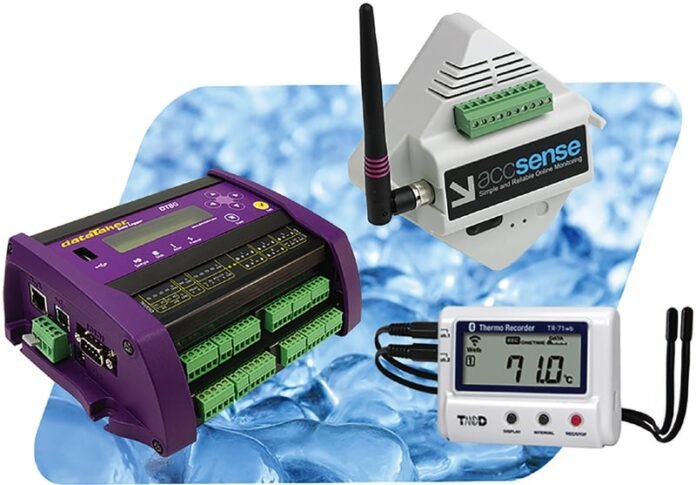In today’s modern architectural style, the importance of energy efficiency and sustainability cannot be overstated. Architects, building managers, and engineers are constantly looking for new ways to reduce energy consumption, improve indoor air quality, and create comfortable living and working spaces. One tool that has become increasingly popular in recent years is the temperature data logger.
A temperature data logger is a device that is used to record and monitor temperature and humidity levels in buildings. These devices are typically small, battery-powered, and equipped with sensors that can measure temperature, humidity, and other environmental factors. Here are some of the key benefits of using temperature data loggers in modern architectural design and management:
- Accurate temperature monitoring
Temperature data loggers provide accurate and reliable temperature monitoring, which is essential for maintaining a comfortable and healthy indoor environment. By measuring temperature levels in real-time, building managers can identify areas of the building that may be too hot or too cold and take corrective actions to improve occupant comfort. In addition, temperature data loggers can help detect potential issues with HVAC systems or other equipment before they become major problems.
Temperature data logger provides high accuracy in temperature monitoring, which is essential for modern architectural designs that require precise control over indoor temperature. They can monitor temperature levels in different areas of the building, such as conference rooms, office spaces, or storage rooms, and can provide real-time temperature data that helps managers make informed decisions. For example, if a room has high occupancy, temperature data loggers can detect and report temperature changes, allowing managers to adjust the HVAC system to maintain a comfortable indoor environment.

- Improved energy efficiency
Temperature data loggers can help improve energy efficiency by identifying areas of the building that are using excessive energy or are not being used efficiently. By analyzing temperature data, building managers can adjust HVAC systems and other equipment to optimize energy use and reduce operating costs. In addition, temperature data loggers can help identify areas of the building that are not being used regularly, which can help reduce energy waste.
Temperature data loggers help improve energy efficiency in modern architectural designs by identifying areas of the building that consume excessive energy. By monitoring temperature levels, they can detect patterns in energy use, such as peak energy usage times, that enable managers to take proactive steps to reduce energy consumption. For example, temperature data loggers can be used to optimize HVAC system settings to reduce energy consumption and costs. This results in a building that is not only more energy-efficient but also saves on operating costs.
- Enhanced building automation
Temperature data loggers can be integrated with building automation systems to provide real-time temperature and humidity data. This data can be used to automate HVAC systems and other building systems, reducing the need for manual adjustments and improving overall building efficiency. In addition, temperature data loggers can be used in conjunction with other sensors, such as occupancy sensors, to create a comprehensive building automation system.
Temperature data loggers can be integrated with modern building automation systems to create a comprehensive, efficient building management system. By providing real-time temperature data, they can be used to automate HVAC systems, lighting, and shading systems, among others, reducing the need for manual adjustments. This helps create a comfortable indoor environment while optimizing energy consumption and reducing operating costs.
- Better indoor air quality
Temperature data loggers can help improve indoor air quality by monitoring humidity levels and preventing the growth of mold and other harmful microorganisms. In addition, temperature data loggers can help detect indoor air pollution, such as high levels of carbon monoxide or volatile organic compounds (VOCs), which can be harmful to human health. Temperature data logger can help improve indoor air quality in modern architectural designs by monitoring humidity levels, which is essential for preventing the growth of mold and other harmful microorganisms.
By detecting indoor air pollution, such as high levels of carbon monoxide or volatile organic compounds (VOCs), temperature data loggers enable building managers to take steps to reduce their concentration, creating a healthy indoor environment. By monitoring temperature and humidity levels, building managers can also take proactive steps to maintain air quality by adjusting the HVAC system or increasing ventilation.

- Cost-effective solution
Temperature data loggers are a cost-effective solution for building temperature monitoring and management. They are relatively inexpensive, easy to install, and require minimal maintenance. In addition, temperature data loggers can help reduce energy consumption and operating costs, providing a quick return on investment.
Temperature data loggers are a cost-effective solution for modern architectural designs that require precise control over indoor temperature. They are relatively inexpensive, easy to install, and require minimal maintenance. Moreover, their integration with building automation systems can result in significant cost savings through reduced energy consumption and operating costs. By using temperature data loggers, modern architectural designs can create a comfortable and healthy indoor environment while optimizing energy consumption and reducing operating costs.
Conclusion
Temperature data loggers are an essential tool for modern architectural design and management. They provide accurate and reliable temperature monitoring, improve energy efficiency, enhance building automation, promote better indoor air quality, and are a cost-effective solution for building temperature management. By using temperature data loggers, architects, building managers, and engineers can create more efficient and sustainable buildings that provide a comfortable and healthy indoor environment for occupants. temperature data loggers are an essential tool for modern architectural designs that require precise control over indoor temperature.
By monitoring temperature levels, they help create a comfortable and healthy indoor environment while optimizing energy consumption and reducing operating costs. With their integration with building automation systems, temperature data loggers provide a comprehensive and efficient building management system. As such, they are a cost-effective solution for improving indoor air quality, enhancing energy efficiency, and automating building systems. Incorporating temperature data loggers into modern architectural designs is an investment in the long-term health, comfort, and sustainability of the building.
















